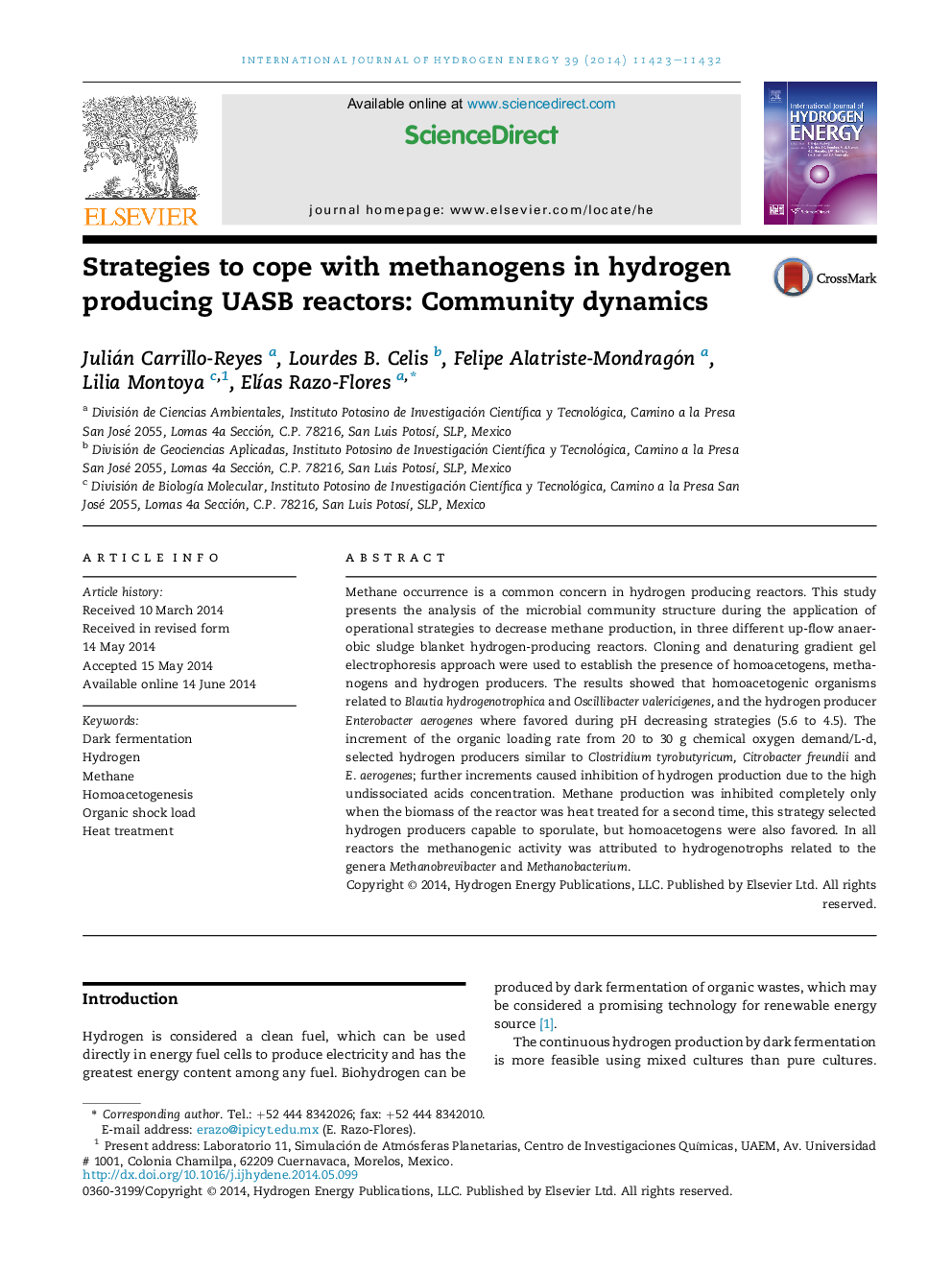| Article ID | Journal | Published Year | Pages | File Type |
|---|---|---|---|---|
| 1273160 | International Journal of Hydrogen Energy | 2014 | 10 Pages |
•Operational strategies control methanogens in hydrogen producing reactors.•Methane is attributed to hydrogenotrophs Methanobrevibacter and Methanobacterium.•Organic shock loads selects hydrogen producers such as Clostridium and Citrobacter.•Hydrogen consumption by homoacetogenesis occurs once methane is controlled.
Methane occurrence is a common concern in hydrogen producing reactors. This study presents the analysis of the microbial community structure during the application of operational strategies to decrease methane production, in three different up-flow anaerobic sludge blanket hydrogen-producing reactors. Cloning and denaturing gradient gel electrophoresis approach were used to establish the presence of homoacetogens, methanogens and hydrogen producers. The results showed that homoacetogenic organisms related to Blautia hydrogenotrophica and Oscillibacter valericigenes, and the hydrogen producer Enterobacter aerogenes where favored during pH decreasing strategies (5.6 to 4.5). The increment of the organic loading rate from 20 to 30 g chemical oxygen demand/L-d, selected hydrogen producers similar to Clostridium tyrobutyricum, Citrobacter freundii and E. aerogenes; further increments caused inhibition of hydrogen production due to the high undissociated acids concentration. Methane production was inhibited completely only when the biomass of the reactor was heat treated for a second time, this strategy selected hydrogen producers capable to sporulate, but homoacetogens were also favored. In all reactors the methanogenic activity was attributed to hydrogenotrophs related to the genera Methanobrevibacter and Methanobacterium.
Graphical abstractFigure optionsDownload full-size imageDownload as PowerPoint slide
